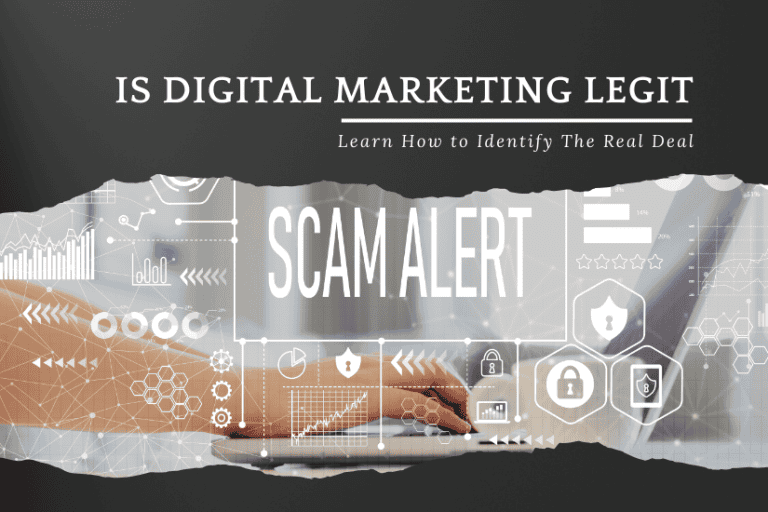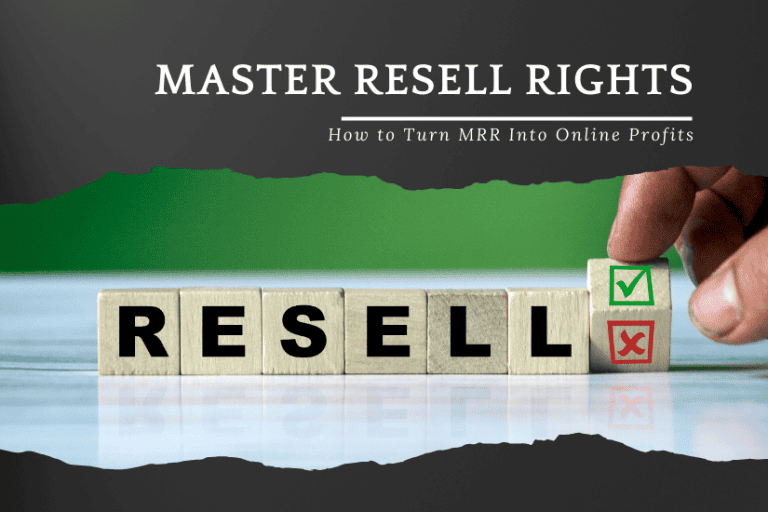The Ultimate Digital Marketing Checklist for Business Success
This site is reader-supported. If you purchase through a link on our site, we will earn a commission. Disclosure Policy.
Hey there, digital marketer! Are you ready to skyrocket your online presence? I know it can be overwhelming – SEO, social media, email campaigns… the list goes on. But don’t worry, I’ve got your back. I’ve put together the ultimate digital marketing checklist to help you crush your goals and dominate your industry.
Think of it as your trusty sidekick, guiding you through the digital marketing maze. No more guesswork, no more missed opportunities. Just a clear, actionable plan to get you from zero to hero in no time. So, let’s dive in and start checking off those boxes!
What Is a Digital Marketing Checklist?

A digital marketing checklist is a comprehensive list of tasks and strategies designed to help businesses effectively promote their products or services online. It covers all the essential elements of a successful digital marketing campaign, from website optimization and social media marketing to email marketing and content creation.
Think of it as your ultimate guide to navigating the complex world of digital marketing. With a well-crafted checklist, you can ensure you’re not missing any crucial steps in your marketing efforts.
Why Is a Digital Marketing Checklist Essential?
In today’s digital age, having a strong online presence is non-negotiable for businesses looking to thrive. However, with so many different aspects to consider, it’s easy to feel overwhelmed or overlook important elements of your digital marketing strategy.
That’s where a comprehensive digital marketing checklist comes in. It helps you stay organized, focused, and on track, ensuring that you’re making the most of every opportunity to reach and engage your target audience.
Benefits of Using a Digital Marketing Checklist
Using a digital marketing checklist offers numerous benefits, including:
- Ensuring consistency in your marketing efforts.
- Helping you prioritize tasks and allocate resources effectively.
- Allowing you to track your progress and identify areas for improvement.
- Providing a framework for collaboration and communication among team members.
- Saving time and reducing the risk of costly mistakes or oversights.
In my experience, businesses that utilize a well-structured digital marketing checklist are more likely to see better results from their campaigns, as they can ensure that no critical checklist items are falling through the cracks.
Essential Elements of a Comprehensive Digital Marketing Checklist

A comprehensive digital marketing checklist should cover all the key areas of your online marketing efforts. These include website optimization, social media marketing, email marketing, content marketing, search engine optimization (SEO), paid advertising (PPC), and analytics and tracking.
Let’s take a closer look at each of these essential elements:
Website Optimization
Your website is often the first point of contact between your business and potential customers. As such, it’s crucial to ensure that your site is optimized for user experience and conversions. This involves factors such as site speed, mobile responsiveness, intuitive navigation, and compelling calls-to-action (CTAs).
Social Media Marketing
Social media platforms like Facebook, Instagram, Twitter, and LinkedIn offer powerful opportunities to connect with your target audience, build brand awareness, and drive engagement. Your digital marketing checklist should include tasks such as creating and scheduling posts, responding to comments and messages, and running targeted social media ad campaigns.
Email Marketing
Email marketing remains one of the most effective ways to nurture leads and build lasting relationships with your customers. Your checklist should cover aspects like growing your email list, segmenting your audience, crafting compelling email content, and analyzing your campaign performance.
Content Marketing
Content is the fuel that drives your digital marketing engine. From blog posts and videos to infographics and eBooks, creating valuable, relevant content helps attract and retain your target audience, establish your authority, and support your SEO efforts.
Search Engine Optimization (SEO)
SEO is the practice of optimizing your website and content to rank higher in search engine results pages (SERPs). This involves tasks such as keyword research, on-page optimization, link building, and local SEO.
Paid Advertising (PPC)
Pay-per-click (PPC) advertising, such as Google Ads or social media ads, can help you reach your target audience quickly and drive targeted traffic to your website. Your checklist should include tasks like keyword research, ad copywriting, bid management, and landing page optimization.
Analytics and Tracking
To continually refine and improve your digital marketing efforts, it’s essential to track and analyze your performance. This involves setting up tools like Google Analytics, defining key performance indicators (KPIs), and regularly reviewing your data to identify trends and opportunities for optimization.
By covering these essential elements in your digital marketing strategy, you can create a comprehensive, cohesive plan that drives real results for your business.
How to Create an Effective Digital Marketing Checklist

Creating an effective digital marketing checklist involves several key steps. By following these guidelines, you can develop a checklist that is tailored to your unique business needs and goals.
Define Your Target Audience
The first step in creating your digital marketing checklist is to clearly define your target audience. Who are you trying to reach with your marketing efforts? What are their needs, preferences, and pain points? Understanding your target audience will help you create more relevant, engaging content and campaigns.
Set Clear Marketing Goals
Next, you need to establish clear, measurable marketing goals. What do you want to achieve through your digital marketing efforts? Whether it’s increasing website traffic, generating leads, or boosting sales, having specific goals will guide your strategy and help you track your progress.
Develop a Marketing Plan
With your target audience and goals defined, it’s time to develop a comprehensive marketing plan. This should outline the specific tactics and channels you’ll use to reach your audience and achieve your goals. Your plan should also include a timeline, budget, and clear assignments for each task.
Execute Your Digital Marketing Campaign
Once your plan is in place, it’s time to put it into action. This involves creating and publishing content, launching campaigns, engaging with your audience, and monitoring your progress. Be sure to stay organized and communicate regularly with your team to ensure everyone is on the same page.
Monitor and Analyze Results
Finally, it’s crucial to continuously monitor and analyze the results of your digital marketing efforts. Use tools like Google Analytics to track your website traffic, engagement, and conversions. Regularly review your data to identify what’s working well and where you can improve. Use these insights to refine your strategy and optimize your campaigns for better results.
Remember, creating an effective digital marketing checklist is an ongoing process. As your business grows and evolves, so too should your marketing strategy. By regularly reviewing and updating your checklist, you can ensure that you’re always staying ahead of the curve and making the most of your digital marketing efforts.
Optimizing Your Website for Digital Marketing Success

Your website is the cornerstone of your digital marketing efforts. It’s often the first point of contact between your business and potential customers, and it plays a crucial role in driving conversions and building brand loyalty. As such, it’s essential to ensure that your website is optimized for both user experience and search engine visibility.
Conduct a Website Audit
The first step in optimizing your website is to conduct a thorough audit. This involves analyzing your site’s performance, identifying any technical issues or areas for improvement, and assessing your content and user experience. Tools like Google Analytics, Google Search Console, and Screaming Frog can help you gather valuable insights and pinpoint opportunities for optimization.
Improve User Experience (UX)
A positive user experience is essential for keeping visitors engaged and encouraging them to take action on your site. Key factors to consider include site speed, mobile responsiveness, intuitive navigation, and clear calls-to-action (CTAs). By focusing on UX, you can reduce bounce rates, increase time on site, and ultimately drive more conversions.
Implement On-Page SEO Techniques
On-page SEO involves optimizing individual web pages to rank higher and earn more relevant traffic from search engines. This includes tasks like keyword research, optimizing page titles and meta descriptions, using header tags appropriately, and ensuring that your content is high-quality and relevant to your target audience.
Optimize for Mobile Devices
With more and more people accessing the internet via smartphones and tablets, it’s crucial to ensure that your website is optimized for mobile devices. This means having a responsive design that adapts to different screen sizes, as well as ensuring that your content is easy to read and navigate on smaller screens. Google’s mobile-first indexing also makes mobile optimization a key factor in search engine rankings.
Measure Website Performance
Finally, it’s important to regularly measure and analyze your website’s performance to identify areas for improvement. Key metrics to track include traffic sources, bounce rates, time on site, and conversion rates. By monitoring these metrics and making data-driven decisions, you can continually refine and improve your website’s performance over time.
Remember, optimizing your website is an ongoing process. As user preferences and search engine algorithms evolve, it’s important to stay up-to-date and continually adapt your strategy to ensure that your site remains a powerful tool for driving digital marketing success.
Leveraging Social Media Marketing in Your Digital Marketing Checklist
Social media has become an indispensable tool for businesses looking to connect with their target audience, build brand awareness, and drive engagement. With billions of active users across platforms like Facebook, Instagram, Twitter, and LinkedIn, social media offers a vast and diverse audience for your marketing efforts.
To make the most of social media marketing, it’s essential to include it as a key component of your digital marketing checklist. Here are some key steps to consider:
Choose the Right Social Media Platforms
Not all social media platforms are created equal, and it’s important to choose the ones that align with your business goals and target audience. For example, if you’re targeting a younger demographic, you may want to focus on platforms like Instagram and TikTok. If you’re a B2B company, LinkedIn may be a better fit. Take the time to research and understand where your audience is most active and engaged.
Optimize Your Social Media Profiles
Once you’ve selected your platforms, it’s crucial to optimize your social media profiles for maximum impact. This includes using high-quality profile and cover images, crafting compelling bios, and ensuring that your contact information and website links are up-to-date. A well-optimized profile can help you make a strong first impression and encourage users to engage with your brand.
Create Engaging Content
The key to success on social media is creating content that resonates with your target audience. This can include a mix of informative blog posts, eye-catching visuals, engaging videos, and interactive polls or quizzes. Aim to create content that educates, entertains, or inspires your followers, and don’t be afraid to show your brand’s personality and values.
Interact with Your Audience
Social media is a two-way conversation, and it’s important to actively engage with your followers. Respond to comments and messages in a timely manner, ask for feedback and opinions, and show appreciation for your community. By building genuine relationships with your audience, you can foster loyalty and turn followers into brand advocates.
Track Social Media Metrics
To continually refine and improve your social media marketing strategy efforts, it’s essential to track and analyze key performance metrics. This can include follower growth, engagement rates, click-through rates, and conversion rates. Use tools like Facebook Insights, Twitter Analytics, and Instagram Insights to gather data and identify trends over time. By regularly reviewing your metrics, you can make data-driven decisions and optimize your strategy for better results.
Remember, social media marketing is an ongoing effort that requires consistency, creativity, and a willingness to adapt. By including these key steps in your digital marketing checklist and staying up-to-date with the latest trends and best practices, you can leverage the power of social media to drive meaningful results for your business.
Key Thought
Think of a digital marketing checklist as your secret weapon for online success. It helps you cover all bases, from SEO to social media, making sure you’re hitting every mark in promoting your business online. Plus, it keeps things organized and on point.
Incorporating Email Marketing into Your Digital Marketing Strategy
Email marketing is one of the most effective ways to reach and engage your target audience. But it’s not as simple as just sending out a few emails and hoping for the best.
To really maximize the impact of your email marketing efforts, you need a solid strategy in place. Here’s how to do it right:
Build Your Email List
The foundation of any successful email marketing campaign is a high-quality email list. Focus on attracting subscribers who are genuinely interested in your brand and what you have to offer.
Tactics like offering a lead magnet, using pop-ups on your website, and leveraging social media can help you grow your list with the right people.
Segment Your Audience
Not all subscribers are created equal. Segmenting your email list based on factors like demographics, interests, and behavior allows you to deliver more targeted, relevant content.
According to Campaign Monitor, segmented campaigns drive a 760% increase in revenue compared to generic ones. So take the time to understand your audience and tailor your approach.
Create Compelling Email Content
Your emails need to offer real value to stand out in a crowded inbox. Share helpful tips, exclusive offers, or engaging stories that resonate with your target audience.
Aim for a mix of educational and promotional content, with a clear call-to-action in every email. And don’t forget the power of an attention-grabbing subject line.
Automate Your Email Campaigns
Email automation allows you to send the right message to the right person at the right time, without manually managing every campaign. Set up triggered emails based on subscriber actions, like welcome sequences for new sign-ups or abandoned cart reminders.
Marketing automation can lead to a 14.5% increase in sales productivity and a 12.2% reduction in marketing overhead. Work smarter, not harder.
Analyze Email Marketing Metrics
To continually improve your email marketing strategy, you need to track key metrics like open rates, click-through rates, and conversions. Use this data to see what’s working and what’s not, and make adjustments accordingly.
A/B testing different elements of your emails, like subject lines or send times, can also help you optimize performance over time. Remember, email marketing is an ongoing process of learning and refining.
Developing a Content Marketing Plan for Your Digital Marketing Checklist

Content marketing is all about creating and distributing valuable, relevant content to attract and retain a clearly defined audience. But without a solid plan in place, your efforts can quickly become scattered and ineffective.
Here’s how to develop a content marketing plan that supports your broader digital marketing goals:
Identify Your Content Marketing Goals
What do you want to achieve with your content marketing? Common goals include increasing brand awareness, driving website traffic, generating leads, or establishing thought leadership.
Clearly defining your goals upfront will guide your content creation and distribution efforts, and help you measure success along the way.
Research Your Target Audience
To create content that resonates, you need a deep understanding of your target audience. What are their pain points, challenges, and interests? Where do they hang out online?
Developing buyer personas can help you get inside the heads of your ideal customers and tailor your content accordingly. The more relevant your content is, the more effective it will be.
Create a Content Calendar
A content calendar is a schedule of what content you plan to publish, when, and where. It helps you stay organized, consistent, and strategic with your content creation.
Include a mix of content types (blog posts, videos, infographics, etc.) and topics that align with your marketing goals and target audience. And don’t forget to leave room for timely, relevant content tied to current events or trends.
Optimize Content for SEO
For your content to be found by your target audience, it needs to be optimized for search engines. That means incorporating relevant keywords, using proper header tags and meta descriptions, and ensuring your content is high-quality and valuable.
But avoid keyword stuffing or creating thin, low-value content just for the sake of SEO. Focus on providing a great user experience first and foremost.
Promote Your Content
Creating amazing content is only half the battle. To get it in front of your target audience, you need a solid promotion strategy.
Share your content on social media, in email newsletters, and through paid advertising. Reach out to influencers or other websites for backlinks and guest posting opportunities. The more places your content appears, the more impact it will have.
Implementing Search Engine Optimization (SEO) in Your Digital Marketing Checklist
Search engine optimization (SEO) is the process of optimizing your website and content to rank higher in search engine results pages (SERPs). When done right, SEO can drive significant organic traffic to your site and help you reach your target audience at the exact moment they’re searching for what you offer.
Here are the key components of a solid SEO strategy:
Conduct Keyword Research
Keyword research is the foundation of SEO. It involves identifying the words and phrases your target audience uses when searching for products, services, or information related to your business.
Use tools like Google Keyword Planner or Ahrefs Keyword Generator to find relevant keywords with high search volume and low competition. These will be the building blocks of your on-page optimization efforts.
Optimize On-Page Elements
On-page SEO involves optimizing individual web pages to rank higher and earn more relevant traffic. Key on-page elements to focus on include:
- Title tags
- Meta descriptions
- Header tags (H1, H2, etc.)
- Body content
- Internal linking
- Image alt text
Incorporate your target keywords naturally into these elements while still providing valuable, relevant content for users.
Build Quality Backlinks
Backlinks are links from other websites to your site. They act as “votes of confidence” in the eyes of search engines, signaling that your content is valuable and authoritative.
Focus on earning high-quality, relevant backlinks through tactics like guest posting, broken link building, and creating linkable assets (like infographics or original research). Avoid spammy or low-quality link-building tactics, which can actually hurt your SEO efforts.
Monitor SEO Performance
SEO is an ongoing process, not a one-time task. Regularly monitor your website’s search engine rankings, organic traffic, and other key metrics to see what’s working and what needs improvement.
Use tools like Google Search Console and Google Analytics to track your progress and identify areas for optimization. Continuously tweak and refine your strategy based on your results.
Utilizing Paid Advertising in Your Digital Marketing Checklist
Paid advertising, also known as pay-per-click (PPC) advertising, is a powerful way to reach your target audience and drive targeted traffic to your website. With platforms like Google Ads and social media advertising, you can get your message in front of the right people at the right time.
Here’s how to make the most of your paid advertising efforts:
Set Advertising Goals
Before launching any paid advertising campaign, it’s crucial to define your goals. What do you want to achieve with your ads? Common goals include increasing brand awareness, driving website traffic, generating leads, or boosting sales.
Your goals will guide your ad creation, targeting, and budget allocation. Make sure they’re specific, measurable, achievable, relevant, and time-bound (SMART).
Choose the Right Advertising Platforms
There are numerous paid advertising platforms available, each with its own strengths and audience. The most popular include:
- Google Ads (formerly Google AdWords)
- Facebook Ads
- Instagram Ads
- LinkedIn Ads
- Twitter Ads
Choose the platforms that best align with your target audience and advertising goals. For example, B2B companies may find success on LinkedIn, while e-commerce brands may focus on Google Shopping ads.
Create Compelling Ad Copy
Your ad copy is the heart of your paid advertising campaigns. It needs to be attention-grabbing, relevant, and persuasive to stand out from the competition and entice users to click.
Focus on highlighting your unique value proposition and benefits, rather than just features. Use strong calls-to-action (CTAs) to encourage users to take the desired action, whether it’s visiting your website, signing up for a newsletter, or making a purchase.
Monitor and Optimize Ad Performance
Paid advertising is an iterative process. It’s essential to continuously monitor your ad performance and make data-driven optimizations to improve your results.
Key metrics to track include click-through rate (CTR), cost per click (CPC), conversion rate, and return on ad spend (ROAS). Use this data to identify top-performing ads and adjust your targeting, ad copy, and budget allocation accordingly.
A/B testing different ad elements can also help you refine your approach over time. Experiment with different headlines, descriptions, images, and CTAs to see what resonates best with your target audience.
Measuring and Analyzing Your Digital Marketing Performance

Digital marketing is all about driving measurable results. But to know what’s working and what’s not, you need to track and analyze your performance data on a regular basis.
Here’s how to measure and optimize your digital marketing efforts:
Set Up Analytics Tools
To track your digital marketing performance, you need the right tools in place. Google Analytics is a must-have for any website owner, providing valuable insights into your traffic, user behavior, and conversion rates.
Other important tools include social media analytics platforms (like Facebook Insights or Twitter Analytics), email marketing software, and SEO tools (like Google Search Console or SEMrush).
Define Key Performance Indicators (KPIs)
KPIs are the metrics that matter most to your business and marketing goals. They might include website traffic, leads generated, conversion rate, revenue, or social media engagement.
Identify the KPIs that align with your specific goals, and focus your reporting and analysis on these key metrics. Avoid vanity metrics that don’t directly impact your bottom line.
Monitor and Analyze Data
Regularly review your analytics data to see how your digital marketing campaigns are performing. Look for trends, patterns, and insights that can inform your strategy and decision-making.
For example, you might notice that certain blog topics drive more organic traffic or that Facebook ads have a higher conversion rate than Instagram ads. Use this information to optimize your approach and allocate your resources more effectively.
Make Data-Driven Decisions
The ultimate goal of digital marketing analytics is to make better, more informed decisions. Use your data to identify areas for improvement and opportunities for growth.
For instance, if you notice a high cart abandonment rate on your e-commerce site, you might invest in retargeting ads or email campaigns to bring shoppers back. Or if you see a spike in traffic from a particular social media platform, you might double down on your efforts there.
Continuously Optimize Your Digital Marketing Efforts
Digital marketing is an ongoing process of continuous improvement. As you gather more data and insights, use them to refine your strategies and tactics over time.
A/B test different elements of your campaigns, from ad copy to landing pages to email subject lines. Stay up-to-date on the latest digital marketing trends and best practices, and be willing to adapt your approach as needed.
Remember, the most successful digital marketers are those who are constantly learning, experimenting, and optimizing based on data. By making analytics a core part of your digital marketing checklist, you’ll be well on your way to driving better results for your business.
Key Thought
Max out your email marketing by building a quality list, segmenting your audience for tailored content, and automating campaigns. Don’t forget to track metrics and refine them based on what you learn.
Create killer content with clear goals and deep audience understanding. Use a content calendar, optimize for SEO, and push promotion to get eyes on your work.
Nail SEO by researching keywords, optimizing page elements, earning quality backlinks, and keeping an eye on performance to tweak as needed.
Leverage paid ads by setting sharp goals, choosing the right platforms for your audience, crafting compelling copy, and continuously optimizing based on ad performance data.
Measure digital marketing success with the right tools and KPIs focused on real impact. Analyze data regularly to make informed decisions that boost results over time.
Frequently Asked Questions Regarding a Digital Marketing Checklist
What is a Digital Marketing Checklist?
A digital marketing checklist is a detailed list of tasks and strategies aimed at enhancing online marketing efforts, covering all essential elements from website optimization to social media engagement.
Why is a Digital Marketing Checklist important?
It helps businesses maintain a structured approach to their marketing efforts, ensuring that no critical steps are missed and that resources are allocated effectively.
How can a Digital Marketing Checklist improve online business?
It ensures consistency, aids in setting priorities, tracks progress, and facilitates team collaboration, potentially leading to better marketing results.
What are the key components of a Digital Marketing Checklist?
The checklist should include website optimization, social media marketing, email marketing, content marketing, SEO, PPC advertising, and analytics.
How often should I update my Digital Marketing Checklist?
Regular updates are crucial as digital marketing dynamics change rapidly. Regular reviews help adapt to new trends and technologies.
Can a Digital Marketing Checklist help in measuring marketing success?
Yes, it includes setting up KPIs and using analytics tools to monitor and optimize marketing strategies based on data-driven insights.
Conclusion
Phew, that was quite the journey through the world of digital marketing! But you made it, and now you’re armed with a powerful tool – your very own digital marketing checklist.
Remember, this isn’t just a list of tasks to complete. It’s a roadmap to success, a guide to help you navigate the ever-changing digital landscape. From optimizing your website to crafting compelling content, you’ve got all the pieces of the puzzle.
But the real magic happens when you put it all together. Consistency is key, so keep referring back to your checklist, tracking your progress, and adjusting your strategy as needed. And don’t be afraid to experiment, try new things, and see what works best for your unique brand.
So go forth, intrepid marketer, and conquer the digital world. With your trusty checklist by your side, there’s nothing you can’t achieve. Happy marketing!







